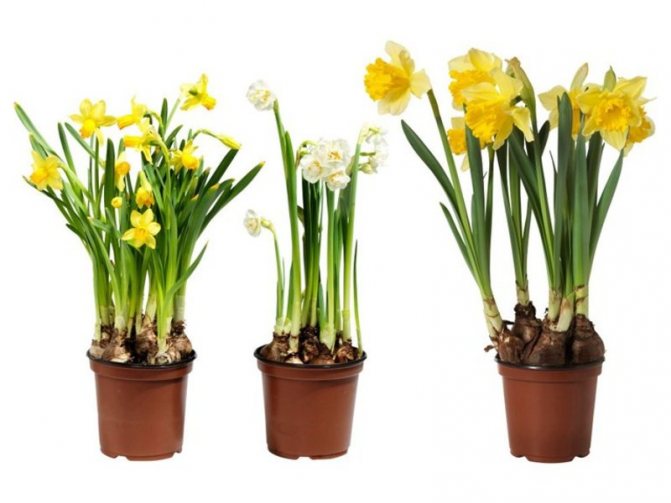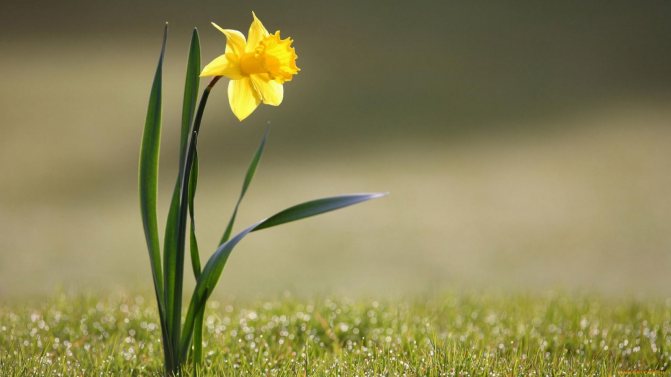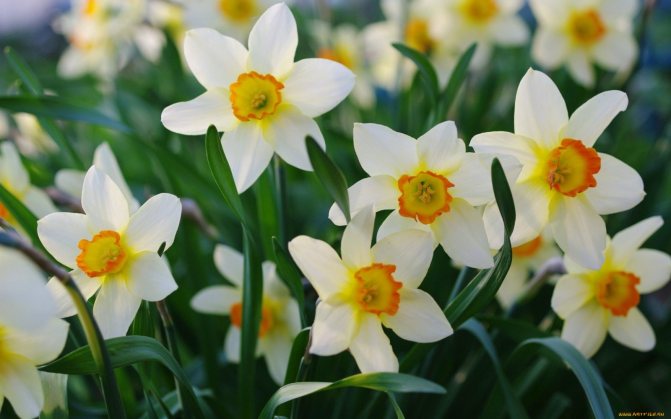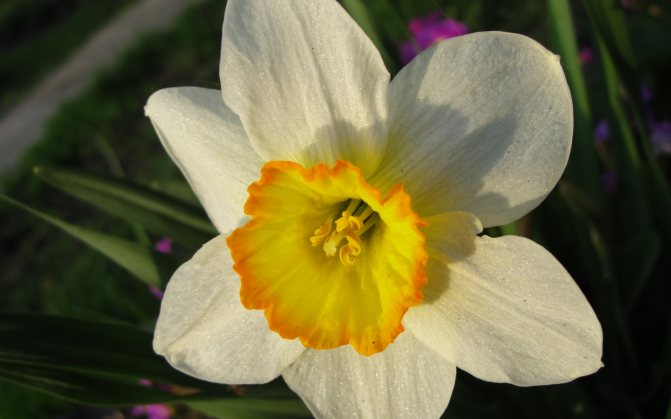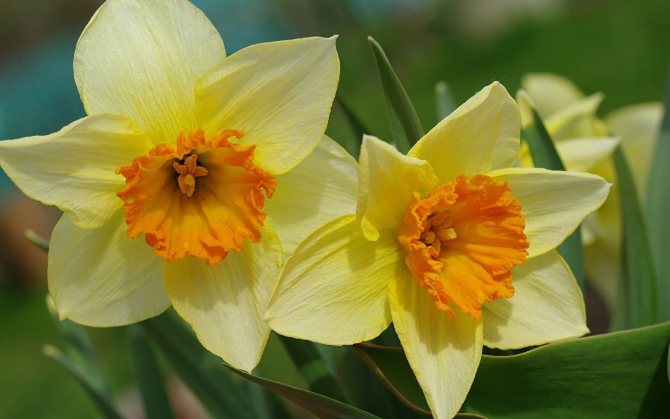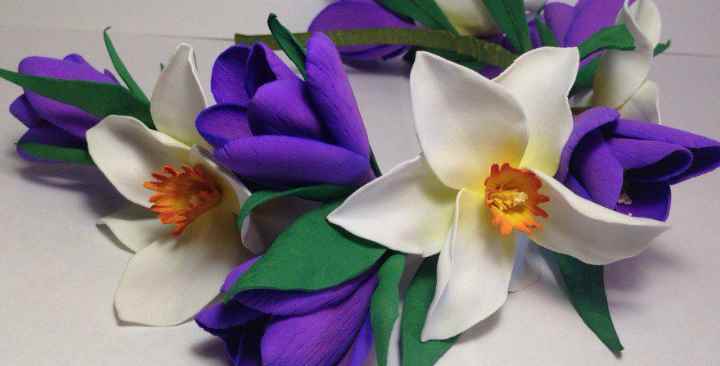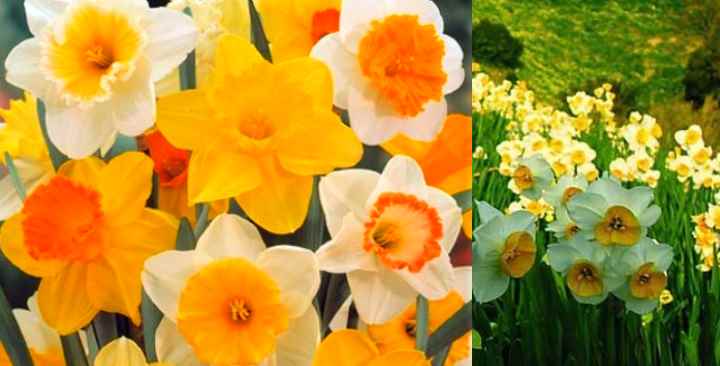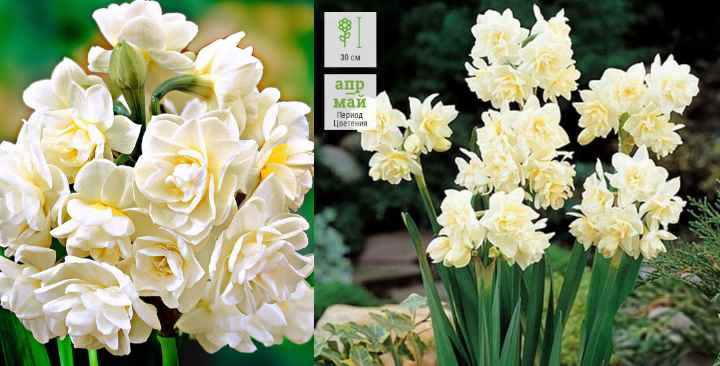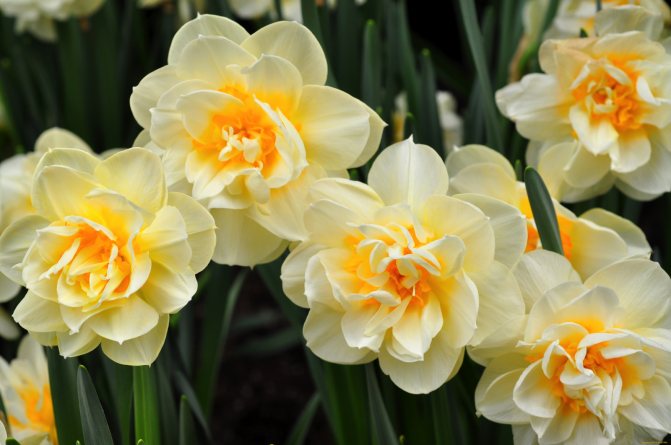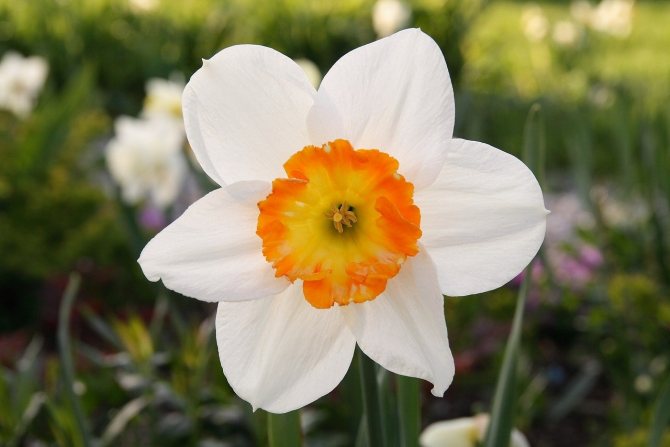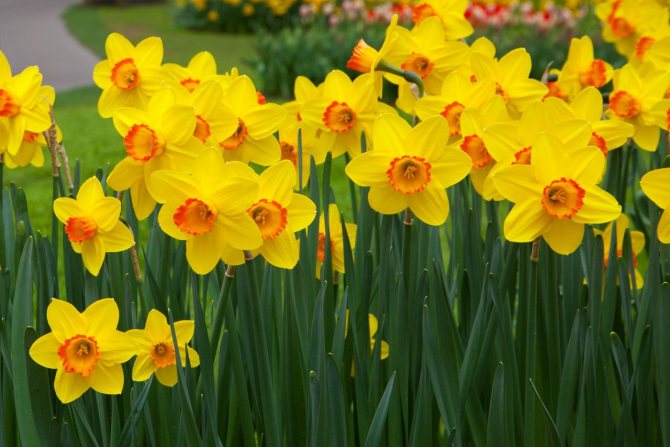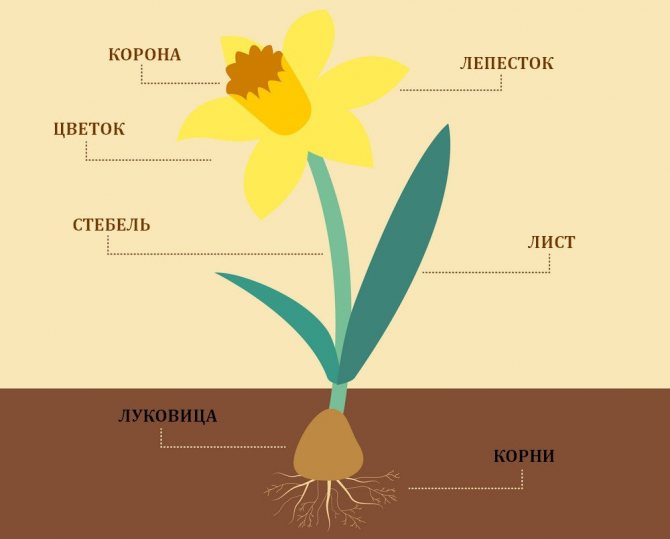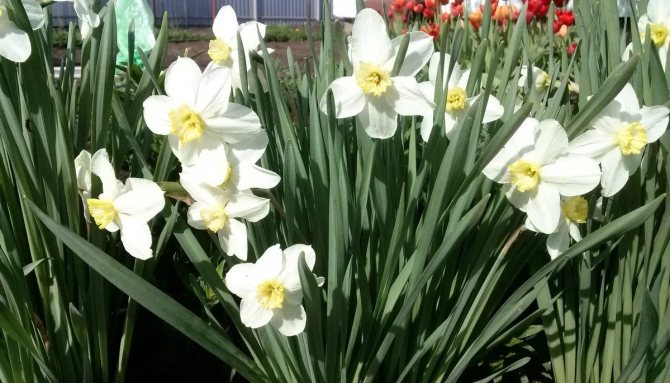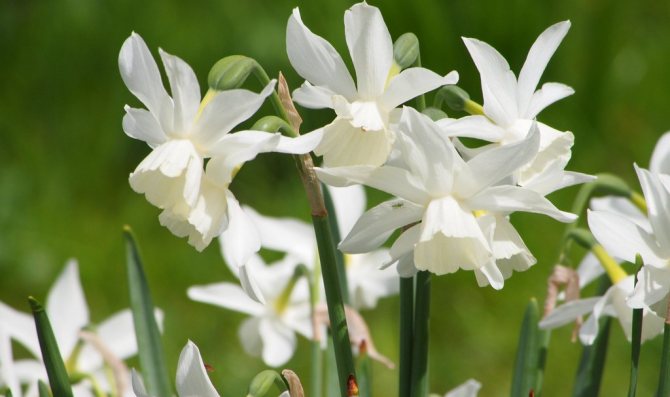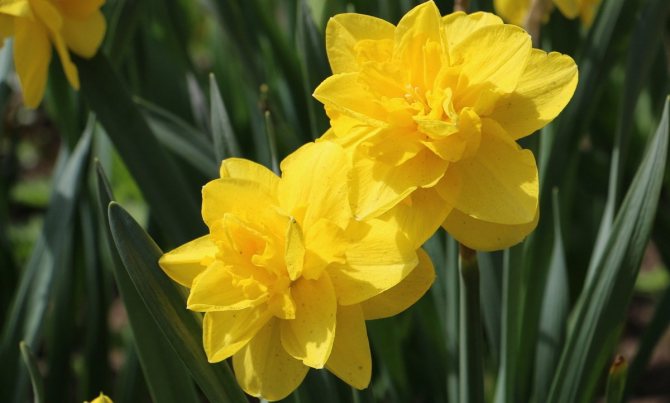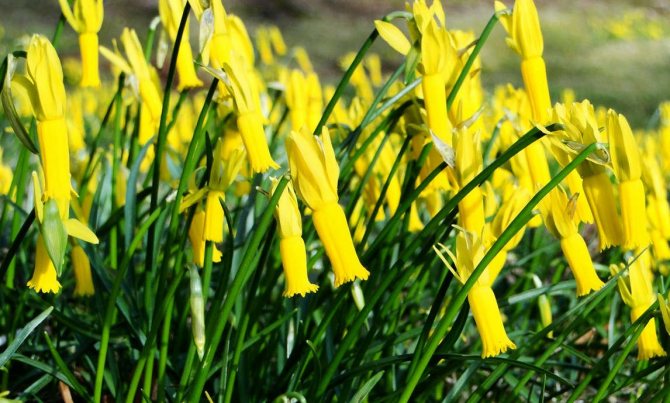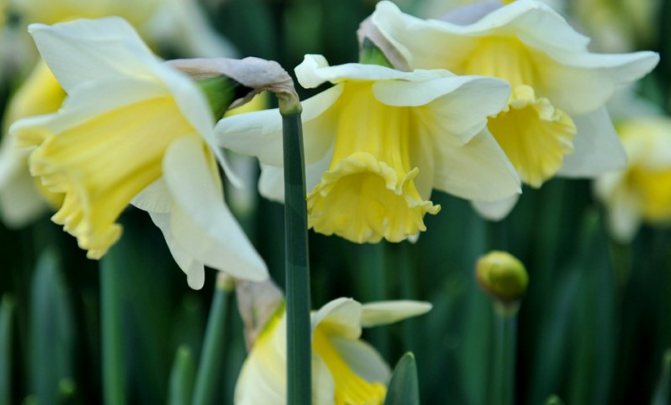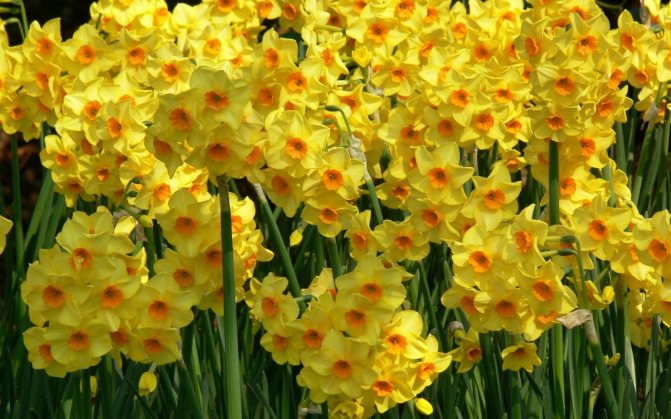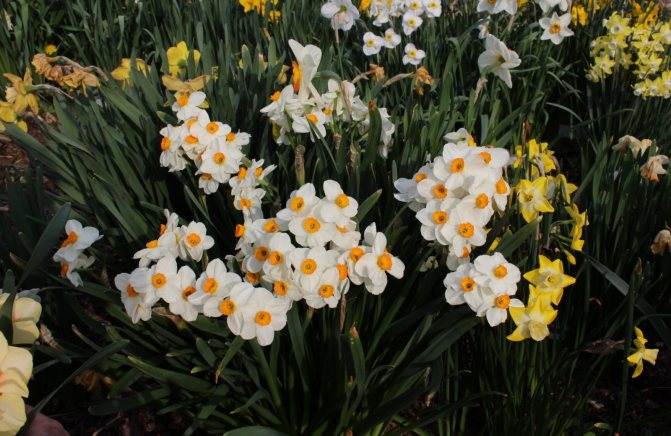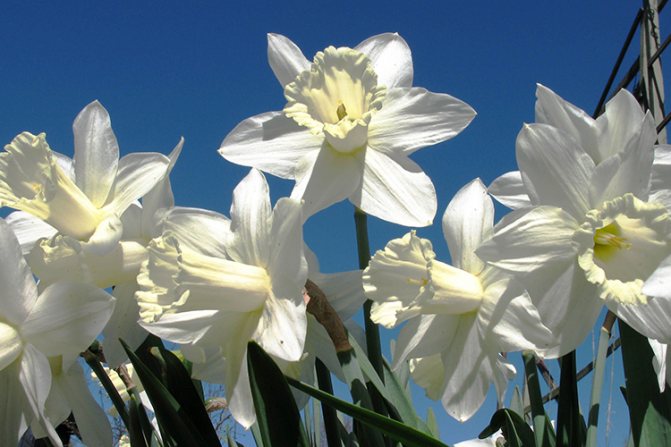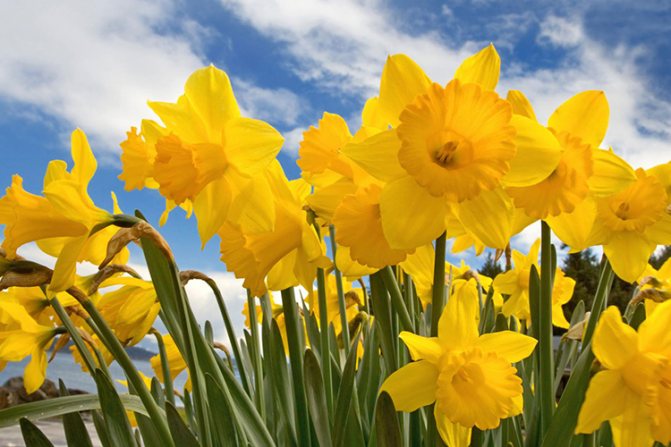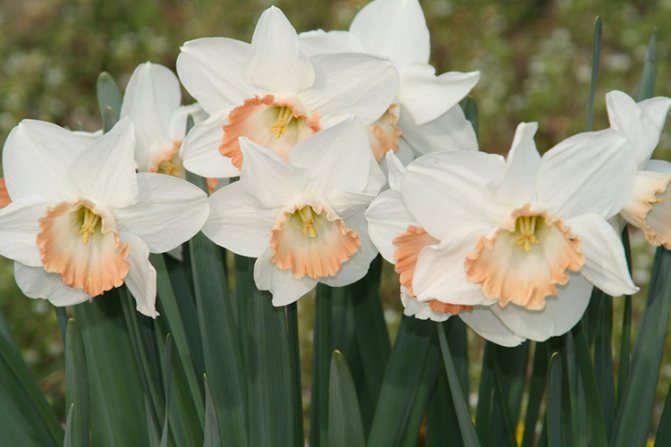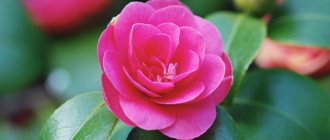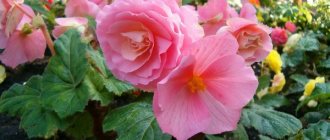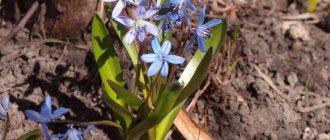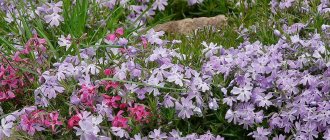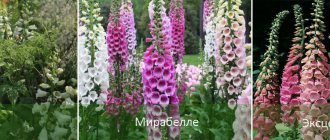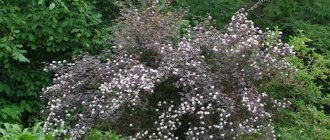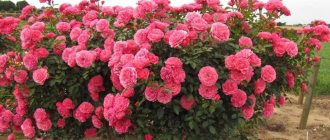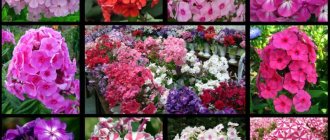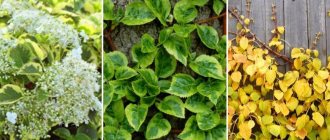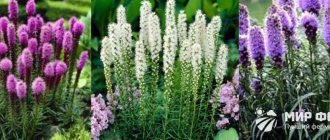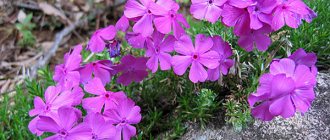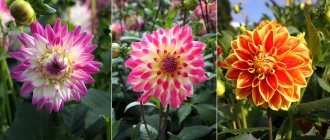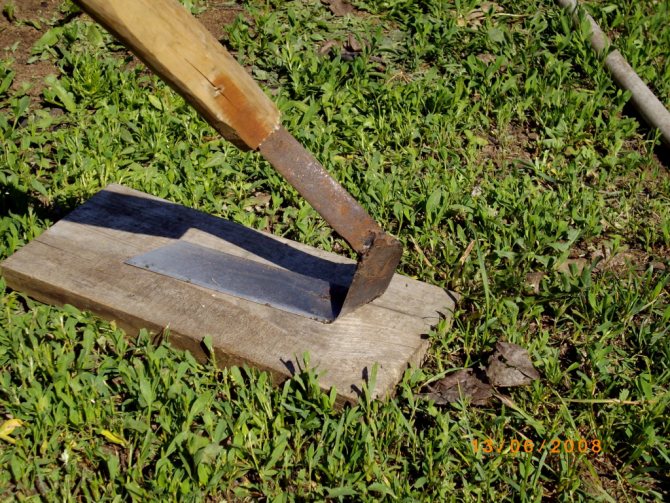
Daffodils are flowers that most people associate with the arrival of spring. Although they are not the first to appear after winter, they are very long-awaited and beloved. There are quite a few people who do not like daffodils in daffodils. Not everyone decides to grow them, but those who do decide do not regret at all and enjoy the fragrance and beauty of these spring flowers.
Characteristics and description of the flower
Narcissus (Narcissus) belongs to the genus of plants of the Amaryllis family, which includes about 50 primary and 60 hybrid species. The name itself comes from the Greek narcao - "intoxicate." Most likely, it is associated with the rich aroma of flowers.
These plants are perennial, herbaceous, bulbous. They have basal, linear leaves and rather large white or yellow flowers, located singly or in racemes. The flowering period is in April-May.
The narcissus consists of 6 perianth petals, the outgrowth of each of which forms a crown with 6 stamens and a column. There are varieties with one-color and two-color flowers, smooth and double petals, with various crowns.
Florists especially appreciate this flower for winter hardiness, ease of care and beauty.
Sowing in autumn
The soil for planting daffodils has been prepared since summer. Fertilizers for flowers are dug up and applied - this is Agricola and a little superphosphate. The second time it is necessary to dig up and not touch until sowing. Daffodil bulbs are planted a month before the snow falls. Daffodil bulbs must be hardened before planting. To do this, you can hold it for two months in a cool place at home, in the basement or in the refrigerator. Then daffodils will be better able to take root and adapt to the conditions. They will grow better and give birth.
Varieties of daffodils
According to the international classification, these plants are divided into 12 groups. In total, there are more than 12 thousand decorative varieties. Depending on the species, daffodils look differently:
- Tubular: the crown may be longer than the petals.
- Large-crowned: funnel-shaped tube longer than a third of the petals.
- Small-crowned: the crown height is much smaller than the petals.
- Triandrus: a hybrid of garden and three-stalked daffodils, can have 2 to 4 flowers in an inflorescence.
- Terry: different varieties with flowers, terry at the edges, belong to this group.
- Jonkiliaceae: 2-3 small fragrant flowers on a peduncle.
- Cyclamen-shaped: long crown and backward-curved petals.
- Tacetaceous: up to a dozen medium-sized flowers per peduncle.
- Poetic: fragrant white flowers with a short crown.
- Split-crown: the crown of the flower is divided into lobes.
- Wild species and natural hybrids.
- Other varieties not included in the listed groups.
By combining different varieties of daffodils on the site, you can create a unique design. Flowers look beautiful in groups: in flower beds, between shrubs, separate islands.
Irrigation
The soil should be of medium importance. The irrigation rate decreases during the dormant period. Use only warm water. Daffodils are very fond of water, so you cannot spare it, you need to water two watering cans of water abundantly per square meter. After watering, you can loosen the soil and rid it of weeds.This approach to irrigation should take place from sprouting to full bloom.
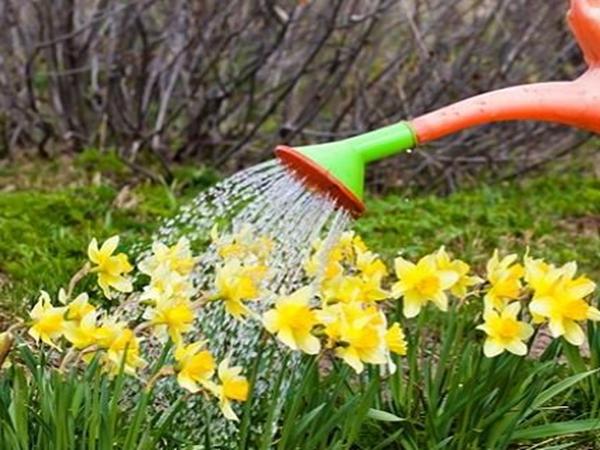

Popular varieties
Various varieties of daffodils are obtained as a result of many years of work of breeders. The first hybrids of these plants were created in the 18th century. Today, flower growers can choose from 12 thousand varieties of any to their taste. The following types are most often bred:
- "Victoria"... The flower is approximately 9 cm in diameter and is arranged almost vertically. The petals are creamy, with a wavy edge, the tube is yellow.
- Easter Bonnet... A flower over 10 cm in size with white petals and a corrugated tube.
- Mount Hood... The petals and tube are soft cream, but over time the tube turns completely white. The diameter of the flowers is 12 cm. This variety is very resistant to adverse weather conditions.
- "Rembrandt"... Flowers of golden color, large, up to 10 cm. They have a weak aroma.
- "White Triumphant"... It has white flowers and a fawn tube with corrugated edges.
- "Confuoko"... Large creamy yellow daffodils about 12 cm in diameter. Plant height reaches half a meter.
- "Orange Monarch"... A very beautiful variety with a bright orange crown with a wavy edge.
- Champagne... The flower is white, the crown is creamy pink, the stem reaches a height of 60 cm.
- "Pink Glory"... Has a strong aroma. The crown is pure pink.
- "Amor"... A cream-colored flower with a diameter of up to 11 cm. The crown is yellow, with orange corrugated edges.
- Gay Challenger... Double flowers with a diameter of about 10 cm. Look great in bouquets.
- "Texas"... A beautiful, rather large double flower, the greenish-yellow lobes of which are interspersed with orange ones.
- "Geranium"... Small white flowers, collected in inflorescences of 3-5 pieces. The crown is bright orange.
Whatever variety of flowers is chosen for planting, it will certainly delight the grower after germination, it will look beautiful both on the site and in the design of bouquets.
Views
There are many varieties of daffodils, which are divided into groups depending on the color and structure of the flower. Some of the plants can be found in the wild on mountain slopes and lawns, while other hybrids were specially bred in the course of long-term selection. Many varieties were created abroad, from where they have already come to our country and won the recognition of gardeners.
Poetic
Daffodils of classic white and yellow color, often with a pleasant aroma. The middle section may be surrounded by an orange or reddish border. Plants of this group can be grown for more than one year without transplanting. Flowering starts late.
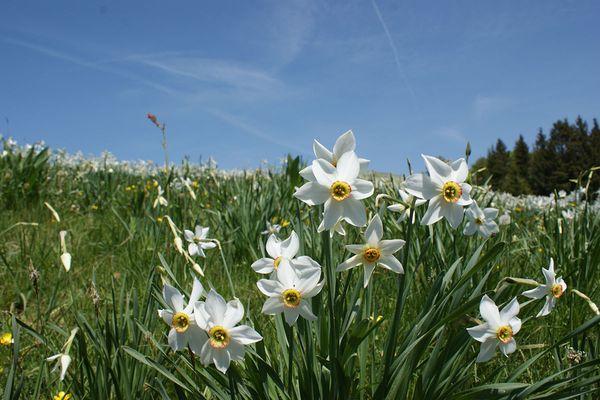

Yellow
The group includes plants with yellow petals and crowns. Shades can vary and change over time, fading in the sun. Yellow daffodils can be tubular, double, large-crowned or belonging to other groups, it is not the structure of the bud that matters, but its color.
White
Daffodils with snow-white perianths and a tube look very impressive. Sometimes blotches of other shades can be found on the petals or the central part.
Pink
The first daffodil with a pink crown was bred at the beginning of the twentieth century by the Englishman Robert Beckhouse and named after his wife Sarah Elizabeth. Today, you can find both double and ordinary daffodils of pinkish shades. They are widely used for decoration, attracting attention with the sophistication of a delicate color.
Terry
In daffodils of this group, the entire flower can be terry, as well as its individual parts: the middle crown or perianth. One or more buds can be located on the peduncle. Terry flowers get wet when watering or during rain, become heavy and droop, often breaking the peduncle, this is their main drawback.
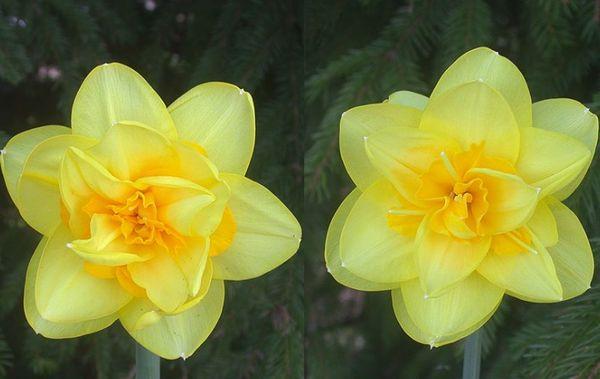

The color varies, there are white, yellow, orange, pink, both parts can be either uniform or bicolored. Terry first appeared by chance during selection, then geneticists specially worked on this property, after which such plants were isolated into a separate group.
Multi-flowered
The name of the group reflects the most characteristic feature of these flowers: at least 8 buds are located in clusters on one peduncle. Due to this, each plant looks like a ready-made bouquet. Perianths are white, yellow, cream, crowns of all shades of orange. The bushes have good immunity and shade tolerance, but they do not tolerate cold winters, they need shelter.
Tubular
The group got its name due to the long "pipe" in the center of the flower, which is comparable in size to the perianth lobes, sometimes even exceeding them in length. The flower is solid, white or yellow, or the color of the two parts may differ. The plant blooms early. One flower on the peduncle.
Cream
Cream-colored daffodils are less common than white, yellow, or bicolor daffodils. The more original and unusual the buds with cream-colored petals look.
Large-crowned
The "tube" of the middle part of the flower is almost half the perianth lobe. The colors of a single flower on a peduncle can be very diverse. The color of the central part is solid white, pink, cream, orange, yellow.
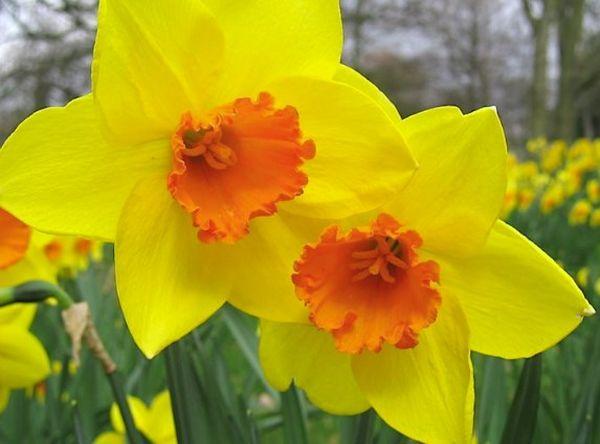

The "crown" can be bordered with a bright stripe or with a color slightly more saturated than the color of the petal. The edge is bent, terry, reminiscent of foam. Perianth color is cream, yellow, white. Flowering starts early.
See also
Description of the sweet Pomponet daffodil variety, planting and care rulesRead
Fine-crowned
The crown differs in size not exceeding a third of the perianth. The color varies, both parts can be painted in the same tone, they can be different. The outer part is white, yellow, cream. The inner one is pink, cream, yellow, greenish, often along the edge there is a border. Flowers are located one on each peduncle, grow well, bloom not very early.
Triandrus
The buds grow in clusters, bending beautifully, at least two on one peduncle up to 25 centimeters long. The color of early blooming flowers is monochromatic: yellow, white or golden. Perianth lobes deviate slightly towards the stem. The plant thrives when planted among stones.
Cyclamenous
Low daffodils that begin to bloom early go well with other spring flowers and are used to decorate curbs and rocky hills. In the color of the only bud on the peduncle, white and yellow colors vary. A distinctive feature is that the perianths are strongly bent back, and the tube is narrow and long.
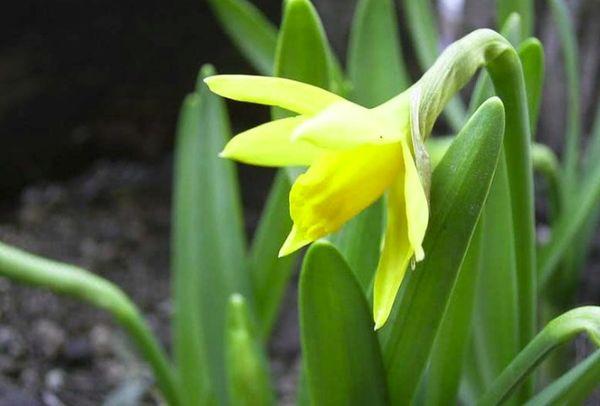

Jonquiliform
Late-flowering daffodil from the Jonquilla group (Jonquilla, JONKI-LEE, Jonquilla) is yellow or old, 5 or 8 flowers are located on the peduncle at once. The central part resembles not a narrow pipe, but a wide-open bowl. A tall flower reaching half a meter is characterized by a strong aroma.
Wild growing
Daffodils of wild-growing forms can be found in the Carpathians, Great Britain, Monaco, Russia, but the Mediterranean climate is most preferable for flowers. The leaves of the plants are narrow, the inflorescences have a yellow, white, cream color, combined with a border of red and orange shades.
Bulbocodium hybrids
N. Bulbocodium hybrids are undersized plants with a flower stalk 10-15 cm long. The crown resembles a bell shape, and the whole flower is a fluffy skirt, beloved by fashionistas of the century before last, for which these daffodils are sometimes called "crinolines". The flower is resistant to slight cold weather, but it is better to cover the planting for the winter.
Growing flowers
The best planting site for these plants is a sunny or slightly shaded area that is sheltered from drafts. Some varieties are more like the sun (for example, tatsenye), while others are better off in partial shade (hybrid varieties).
What flowers are better to plant in the country
Daffodils are easily propagated by bulbs. A signal for transplanting a plant can be a reduction in the number of flowering shoots. When the leaves begin to dry out, the bulbs are dug up, dried in the shade, and then stored.
They are planted in August - early September to a depth of about 10 cm, leaving gaps between them of 15 cm. Most varieties are resistant to cold, but some daffodils cover for the whole winter, where they are until the snow melts completely.
Shine
The room or area where the daffodils are grown should be well lit. The soil of the plot should be loose to allow water and air to pass through, loam is perfect for this. If tulips or lilies have grown on the plot before, such a neighborhood will not work. Another thing is if legumes or cucumbers grew, this is a great place for flowers. A daffodil can live in a slightly darkened place. In indoor conditions, it is better to place the plant in such a way that the rays of the sun that come from the South, West or East fall on it.
Daffodil care
These flowers are hygrophilous. In the absence of rain during the entire flowering period and about a month after it, they need to be watered. Otherwise, it is enough to weed and remove diseased plants.
Daffodils can grow without transplant for up to 6 years. At first, they need intensive feeding, since flowers prefer soils rich in nitrogen and potassium. After the first spring shoots, feeding is carried out for the first time in moderation, since an excess of nitrogen can cause diseases and the growth of weak leaves. The second time they are fed during the release of the peduncle with potassium and nitrogen; the third - with nitrogen, phosphorus and potassium after the full maturation of the buds and the fourth - with phosphorus and potassium during the flowering period. Manure as a fertilizer is contraindicated for daffodils, since it can attract a dangerous pest of these flowers - the daffodil fly.
To make bouquets, flowers do not need to be cut, but broken at the surface of the soil. Immediately you need to put them in water, and if this is not possible, wrap them in damp paper. The main thing is that the juice does not flow out from the slices. Therefore, before placing the daffodils in the water, you must hold them down with the flowers.
Sowing in spring
In early spring, before disembarking, you must first dig up the ground to the depth of the shovel musket. During digging, you need to add sand, manure and nitrophosphate to the soil. When the time comes for planting the head, you need to dig small depressions in the ground, add a pinch of sand and ash, place the head in the recess, sprinkle with soil with fertilizer, pour water and pour earth on top, compacting it. The distance between the heads depends on whether you will change the location for the flowers in a year or let them grow in the same place for five years. You can plant in another place, then a distance of 10 cm is enough, but if the flowers will not be transplanted for five years, then the distance must be increased to 20 cm. After sowing, you need to mulch the soil on the site. Hardwood sawdust, nutshells, grass cuttings, or fine straw are suitable. The coating will help to obtain not only an attractive effect, but will also prevent weeds from growing, and will keep the soil from drying out quickly. If you mulched the ground with flowers, then in the future you will not have to loosen the ground after irrigation.
Fertility
A daffodil with a yellow center reproduces with the help of branches that form in the sinuses of the shell. When the scales fall off, children gain independence. They separate from an adult bulb within 4 years. A bulb that comes from a baby can only get high fertility in the third year.Every gardener knows that the fastest way to propagate narcissus is through the bulb, that is, when you dig out the bush, then the larger bulbs can be immediately planted again at the same depth in the hole. In the same place, a daffodil plant can be grown for up to two to three years. Drying and peeling the bulbs after digging is optional and can be planted again immediately, as opposed to propagating through seeds. It is recommended to plant the bulbs in rows at a distance of up to 20 cm. Before planting, the soil must be shed.
